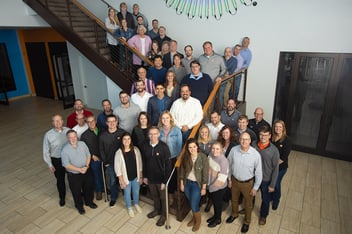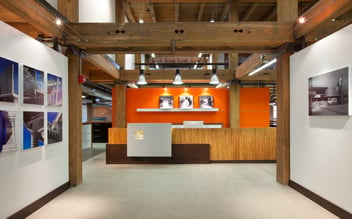
So much has been written about Millennials, but as they begin to age out of higher education, the focus is quickly turning to Generation Z (defined as those born after 1996, currently considered ages 3 – 23).
The Size of Generation Z
The older members of Gen Z are just entering or finishing college. It’s important to remember that Generation Z actually outnumbers Millennials by over 1 million – so now is the time to ramp up your planning efforts for the long run.
Rethinking Space for Generation Z
For the longest time, colleges have been built with specific spaces in mind for specific functions. You eat in the dining hall. You study in a study lounge. You do homework in a computer lab. You live in a dorm room. You learn in a classroom. And this has worked for past generations—but trends are showing this needs to be rethought.
Many of the college and university projects we’ve worked on over the past few years have been focused on the need to blur the boundaries of specific spaces on campus.
Gen Z has been growing up collaborating in converged spaces. They ate in front of the TV versus at a dinner table. They studied in a park or coffee house versus a study hall. They’re used to occupying spaces where others like them hang out, and collaborating and socializing while working, studying or eating. This can challenge a siloed campus significantly.
Customization vs. Connection
Millennials wanted the ability to customize their space. They were content with learning in a classroom, but wanted it to be configurable—providing a different arrangement for poetry than for mathematics.
Gen Z on the other hand is all about connection when it comes to learning—or almost anything. They’re looking for spaces that can deliver curriculum “anytime and anywhere.” The lines between social life, work, eating, shopping, learning and discovering are blurry and extremely fluid. And those preferences impact how we rethink space for their generation.
Etiquette vs. Function
Because Gen Z is so fluid, spaces need to align more to their mindset—and behavior of those in the space—than a specific purpose. They don’t need to be doing the same things as others in the space, but if it’s a quiet space, they expect others to be quiet—whether eating, studying, working or socializing. And vice versa for loud spaces.

Developing spaces that are designated for loud discovery and fun as well as those for quiet, private introspection is a more appropriate approach for them. By the same token, spaces that are designed to be collaborative also need to have areas for working individually or in smaller groups to move ideas forward.
Flexibility in Existing Spaces
These changes don’t mean entire campuses need to be rebuilt. Instead, we’re helping clients adapt existing spaces (and yes, build new ones) that are ready and comfortable for Gen Z learning and experiences.
It may be as simple as making four small study lounges into one large, open living space more reminiscent of a living room than lounge in a dorm.

Incorporating food into study spaces can include adding a coffee bar and lounge seating to the library. By the reverse, incorporating a more relaxed update to cafeteria spaces and creating areas for group eating and collaboration can help bring the social and learning aspect to a traditional eating space.
Adapting for the Future
Fortunately, Gen Z is just beginning to make their way through colleges and universities—and will continue to do so for the next 20 years. Campuses that create flexible spaces will not only attract more Gen Z students, but will also help them learn, discover and grow—on their terms.



